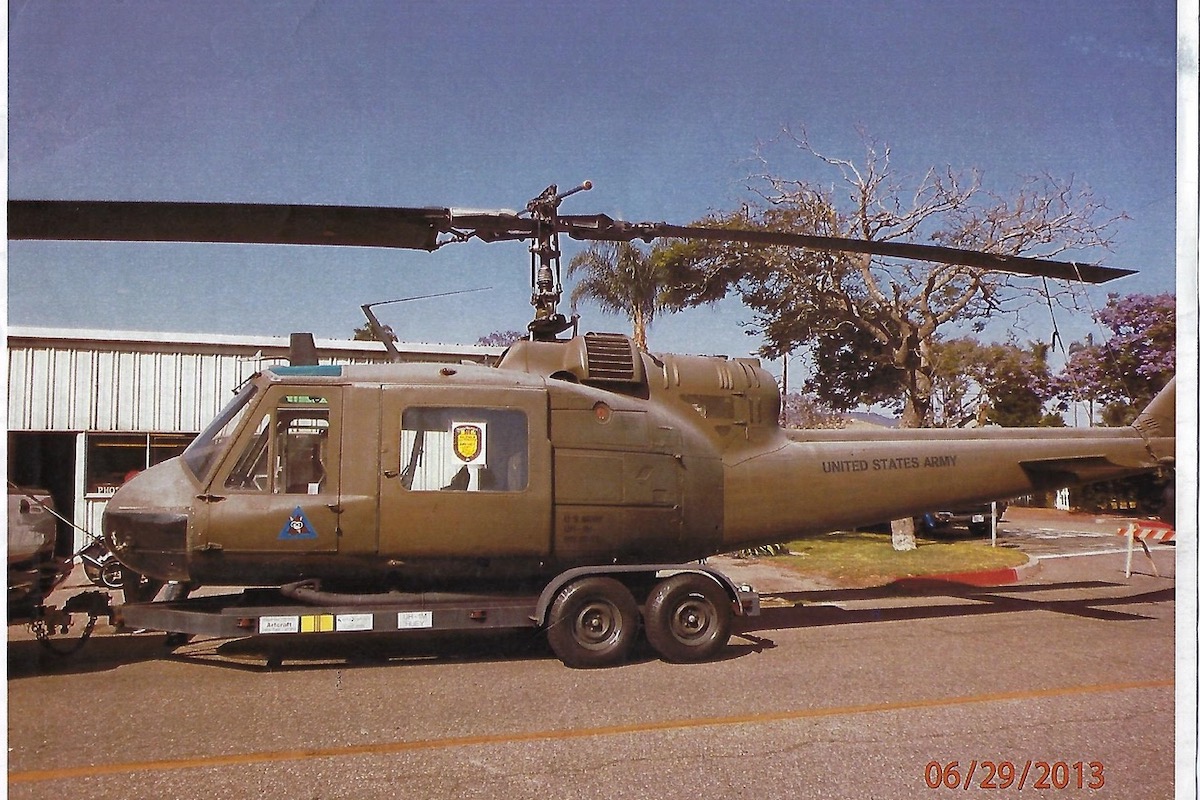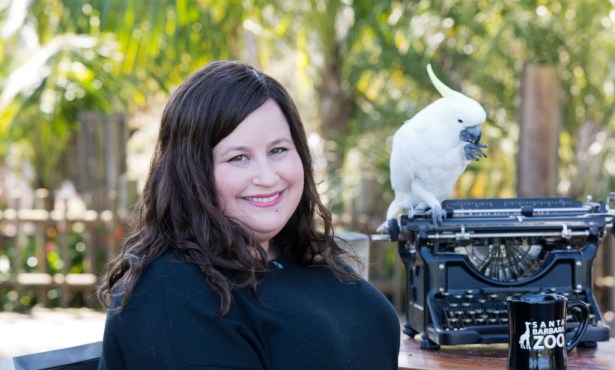Huey Needs a Home
Santa Barbara Vietnam Vets Chapter Looking for the Next Chapter for Iconic Huey

Few sounds in the world of aircraft are more iconic than the sound of the “whomp, whomp, whomp” of the Huey helicopter blades as they gracefully turn. It’s also the sound of the “bird” most identified with the Vietnam War. Now, the Vietnam Veterans of America (VVA) Chapter 218 is looking for the right home to put its Huey for future generations to honor and admire. Since the chapter acquired it in 1993, you may have seen it at parades and events over the years where hundreds of people have had a chance to sit in the Huey and get the feel of what it must have been like to have been a pilot, crew member, or a soldier in need of transport. The bird means so much more to our members because to all the men and women in VVA Chapter 218, this Huey is family.
For the first time, the Chapter is reaching out to the community. The men and women of the Chapter who have been working on the committee have been unable to get a foothold yet on a place for the Huey to keep it in Santa Barbara. The Chapter is hoping by opening the search up, inviting the community to help us, the right place will be found.
Peter Bie, President of the Chapter, recalled, “I joined up with the 1at Air Cavalry Vietnam in August of 1968. For the next six months I flew on a ‘lift’ Huey as a door gunner on the right side. Our job was to insert troops into the operational area at first light and extract them at the end of the day and, of course, to provide ongoing support. Everyone who served in-country, whether they ever rode on one, or just watched them fly overhead, has a soft spot in their heart for these birds. Our Huey needs a permanent home within Santa Barbara County, a place where veterans and civilians alike can visit at any time to honor and remember. She’s been with the 218 for 30 years, and we’d like to make sure she’s around for another 50!”
Two of the chapter members wrote about the Huey. In U.S. Army Sgt Hap DeSimone’s piece, he opened by setting the current scene for the Bell Helicopter UH-1: “It is MOSTLY aluminum with some steel in it. It sits deathly quiet. It doesn’t move. The engine is missing. The radios are silent. The raucous life it lived is invisible to you. It is well over 50 years old, loved as one of many, but now one of the few complete aircraft left.” DeSimone was a radio man in Vietnam and worked on the Hueys. Saying it means a lot to him is an understatement. He noted, “You might not know the name of a single veteran crowding around her, but you know her name: HUEY.” It’s so true: This beloved bird holds a special place in so many of our veterans’ hearts, and even civilians know what the Huey meant to those serving in Vietnam. Younger generations know about it from movies and TV shows as well as albums and other pop culture references.
Joe Danely, U.S. Army Huey pilot, painted his memories, so vividly noting, “As one of more than 100,000 pilots and crew members of the Huey, I have a lot of love for the Huey. We carried troops into battle; resupplied them with food, water, and ammo; evacuated them to life-saving hospitals; and lifted them out when the battle was over. Huey tirelessly carried us over rivers, rice paddies, beaches, villages, mountains, and deltas. Into and out of pickup zones and landing zones, mountaintops and river valleys, whether in daytime or pitch-black night!” Talk about setting the scene from the pilot’s P.O.V. when the Huey was indeed front and center.
This aircraft was a lifeline for so many soldiers. It continues to bring back memories for our veterans, and our chapter members are anxious to find a new home for it. “In effect, it continues to be a lifeline — for all of us,” said Rik Peirson (CPT — Military Intelligence, RVN ’68-’69). “A connection that extends our ability to make an impression on new generations. The young may not understand all of what the Huey means — but being in that cockpit, even briefly, creates a memory for them not unlike the ones it created for all of us. For me, the ‘whomp, whomp’ of an incoming Huey was like the Army bugle — signifying that the cavalry was on the way!”
Ed Foster served as a Huey pilot and is the member of VVA 218 who has taken the lead as the point man for taking in the community’s responses. You can give him a call at (805) 770-0979.
411:
WHO: Vietnam Veterans of America Chapter 218
WHAT: Huey Needs a Home Campaign
CONTACT: Call Ed Foster at (805) 770-0979
MORE INFO: https://www.vvachapter218.org/huey
We graciously accept donations of any amount to help us find the right place in Santa Barbara County for the 218’s Huey to live on. Thank you. https://www.vvachapter218.org/donate
Facebook: https://www.facebook.com/vva218

